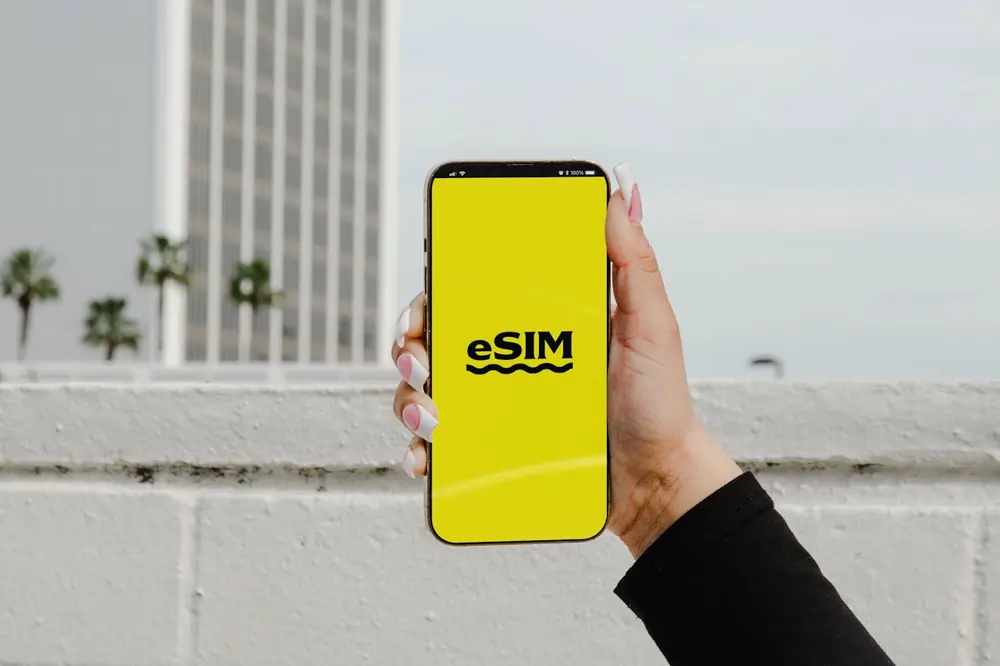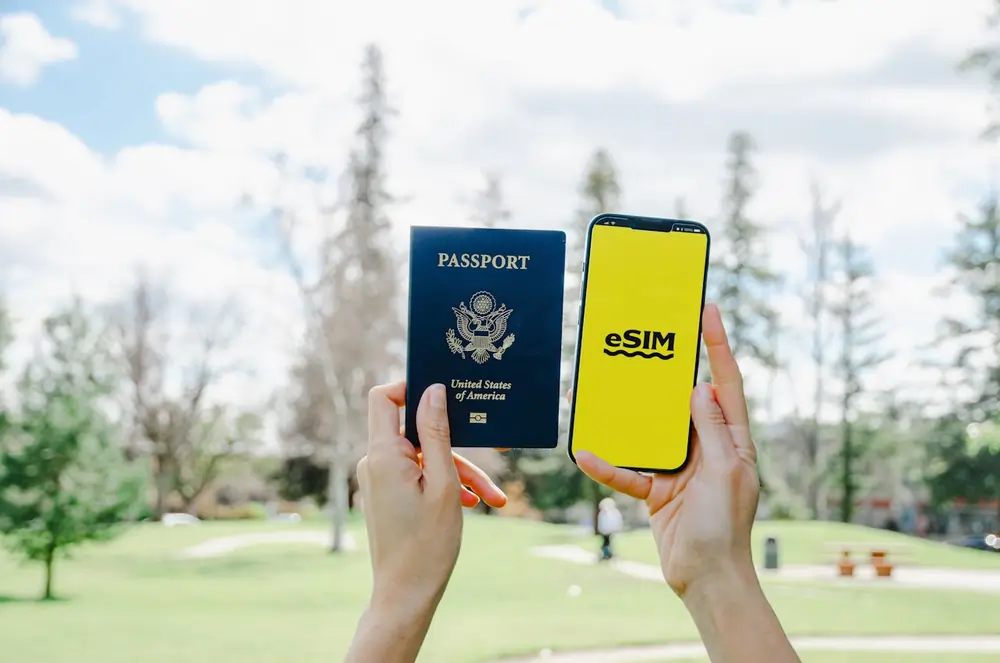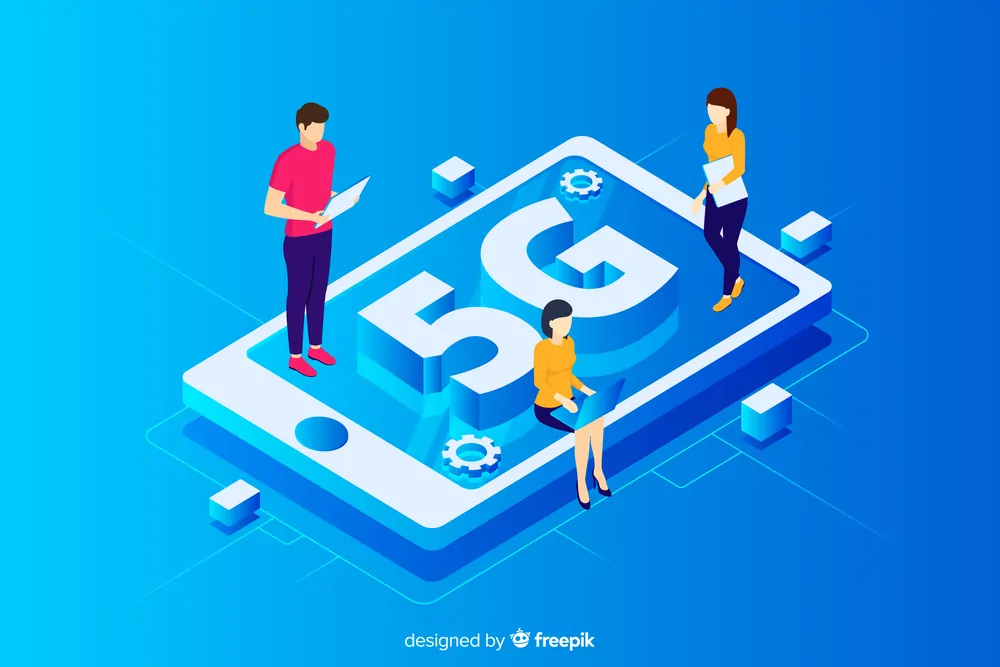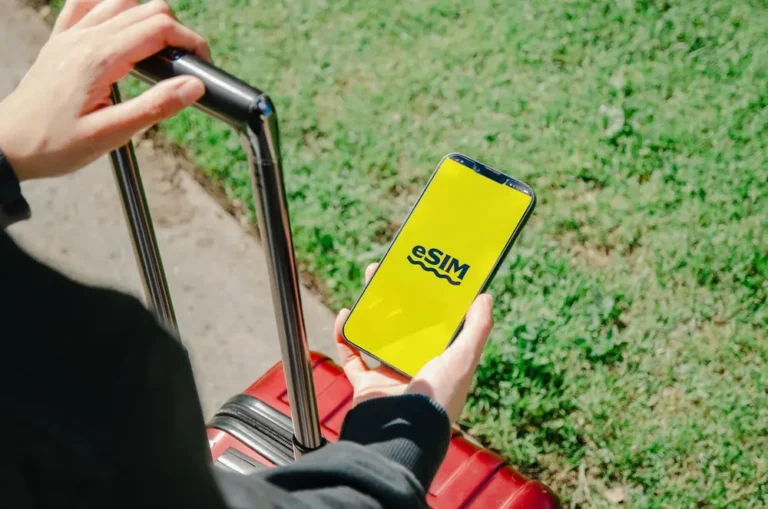Are you tired of fumbling with tiny SIM cards every time you switch phones or travel abroad? Do you wish there was an easier way to manage your mobile connectivity? Enter the world of eSIMs – the game-changing technology that’s revolutionizing how we connect our devices to cellular networks.
In this comprehensive guide, we’ll explore how eSIMs work and why they’re becoming increasingly popular in 2024. Whether you’re a tech enthusiast or simply curious about the future of mobile connectivity, this article will give you all the information you need to understand and make the most of eSIM technology.
How Do eSims Work?
Welcome to the future of mobile connectivity! You might have heard about eSIMs — those tiny, invisible SIM cards built into your device. But what exactly are they, and how do they work? In a world where traditional SIM cards once reigned supreme, eSIMs are now changing the game. Whether you’re a frequent traveler, looking to ditch physical SIM cards, or just curious about the technology, you’ve come to the right place. eSIMs (embedded SIMs) are becoming more common in our smartphones, smartwatches, and tablets. And the best part? They offer unparalleled convenience and flexibility! Let’s dive into the magic behind how eSIMs work, and explore why they’re quickly becoming the go-to solution for mobile connectivity.
What Is an eSIM and How Is It Different from a Regular SIM?
 Ever wondered what an eSIM is and how it’s different from a regular SIM? An eSIM is basically a digital version of the physical SIM card. Instead of using a plastic card, you can download an eSIM by just scanning a QR code. This negate the need to physically swap out SIM cards in your smartphone.
Ever wondered what an eSIM is and how it’s different from a regular SIM? An eSIM is basically a digital version of the physical SIM card. Instead of using a plastic card, you can download an eSIM by just scanning a QR code. This negate the need to physically swap out SIM cards in your smartphone.
With eSIMs, you can have multiple SIM cards in one handset, making it super easy to switch between your personal and work phone. The iPhone 14, iPhone 13, iPhone 12, iPhone 11, and iPhone SE all support eSIMs. So, what’s the difference? Unlike a traditional SIM card, an eSIM is built into the phone’s hardware.
With eSIM plans and eSIM packages, you can easily connect to a mobile network without needing a new SIM card. eSIMs make it easier for phone manufacturers like Apple and Motorola to design slimmer phones like the Motorola Razr. Plus, eSIMs mean you can switch between eSIM providers without needing a new card.
An eSIM, short for embedded SIM, is a digital version of the traditional physical SIM card. Unlike its plastic counterpart, an eSIM is built directly into your device’s hardware. This tiny chip can store multiple carrier profiles and be reprogrammed remotely, eliminating the need for physical SIM swapping.
eSIM vs SIM card: Key Differences
- Size: eSIMs are significantly smaller than even the tiniest nano-SIM cards.
- Flexibility: eSIMs can store and switch between multiple carrier profiles.
- Activation: eSIMs are activated through software, not physical insertion.
- Durability: With no removable parts, eSIMs are less prone to damage.
Advantages of eSIM Technology
- Convenience: No more hunting for SIM ejector tools or worrying about losing tiny cards.
- Space-saving: eSIMs free up valuable real estate inside devices, allowing for slimmer designs or larger batteries.
- Multi-network support: Easily switch between carriers or use dual SIM functionality.
- Travel-friendly: Activate local plans without visiting a store or swapping physical SIMs.
Devices with eSIM Support
As of 2024, many popular devices support eSIM technology, including:
- Smartphones: iPhone 15, Samsung Galaxy S23, Google Pixel 7
- Tablets: iPad Pro, Samsung Galaxy Tab S8
- Smartwatches: Apple Watch Series 8, Samsung Galaxy Watch 5
- Laptops: Microsoft Surface Pro X, Lenovo ThinkPad X1 Carbon
eSIMs Work
 Now that we understand what eSIMs are, let’s dive into the mechanics of how eSIM works in mobile devices.
Now that we understand what eSIMs are, let’s dive into the mechanics of how eSIM works in mobile devices.
Remote Provisioning: The Heart of eSIM Technology
The key to eSIM functionality lies in remote provisioning. This process allows carriers to securely deliver and manage eSIM profiles over the air. Here’s how it works:
- Your device connects to the internet (via Wi-Fi or cellular data).
- The carrier sends encrypted profile data to your device.
- Your device’s eSIM securely stores the profile information.
- The new profile is activated, connecting you to the carrier’s network.
This process happens seamlessly, often in a matter of seconds. No physical SIM card insertion or store visits required!
Switching Between Networks and Profiles
One of the most significant advantages of eSIMs is the ability to easily switch between different carrier profiles. Here’s how you can do it:
- Go to your device’s settings menu.
- Select “Cellular” or “Mobile Data” options.
- Choose “Add Cellular Plan” or “Add eSIM.”
- Follow the prompts to activate a new carrier profile.
With eSIMs, you can have multiple active profiles simultaneously, perfect for separating work and personal lines or managing international travel plans.
Benefits of eSIM Technology
Using eSIMs on your mobile phone has some awesome benefits. With 5G rolling out, an eSIM card makes it super easy to switch networks. No more fiddling with a physical card; just buy an e-SIM and you’re good to go in a matter of minutes.
For subscribers, an eSIM is like a traditional SIM but better. You can have one eSIM for multiple carriers, making it easier to switch and prepay for GB of data. Plus, eSIM makes it a breeze to change your carrier without inserting a new subscriber identity module.
Devices like the iPhone XR support eSIM technology, making it a seamless way to stay connected. Whether you need to connect to the Internet of Things or make and receive phone calls, an eSIM offers flexibility and convenience.
The advantages of eSIM technology extend far beyond convenience. Let’s explore some of the key eSIM benefits that are driving its adoption:
Flexibility for Travelers
 eSIMs are a game-changer for frequent travelers. No more hunting for local SIM cards or paying exorbitant roaming fees. With an eSIM-enabled device, you can:
eSIMs are a game-changer for frequent travelers. No more hunting for local SIM cards or paying exorbitant roaming fees. With an eSIM-enabled device, you can:
- Activate local data plans before you even land in a new country.
- Keep your home number active while using a local data plan.
- Switch between multiple international plans with ease.
Environmental Impact
The shift to eSIMs has significant environmental benefits:
- Reduced plastic waste: Billions of plastic SIM cards are produced annually. eSIMs eliminate this waste.
- Lower carbon footprint: No need for physical production, packaging, and shipping of SIM cards.
- Extended device lifespan: eSIMs can be updated to support new technologies, potentially extending the useful life of devices.
Enhanced Security
eSIMs offer several security advantages over traditional SIM cards:
- Tamper-resistant: eSIMs are hardwired into devices, making them difficult to physically compromise.
- Remote management: Carriers can quickly deactivate compromised eSIMs remotely.
- Encryption: eSIM profiles use strong encryption to protect user data.
How to Activate an eSIM on Your Device
Hey! So, you want to activate a prepaid eSIM on your device? No worries! First, check out the table of contents in your phone’s settings. You’ll find options for both SIM and eSIM. Follow the steps, and boom, your virtual circuit card is ready to go!
Ready to make the switch to eSIM? Here’s a step-by-step guide on how to set up eSIM on popular devices:
iPhone eSIM Setup
- Go to Settings > Cellular > Add Cellular Plan.
- Scan the QR code provided by your carrier.
- Follow the on-screen instructions to activate your eSIM profile.
Android eSIM Support
 While the process may vary slightly between manufacturers, here’s a general guide for Android devices:
While the process may vary slightly between manufacturers, here’s a general guide for Android devices:
- Go to Settings > Network & Internet > Mobile Network > Add carrier.
- Choose “Don’t have a SIM card?” or “Want to add an eSIM?”
- Scan the QR code or enter the activation code provided by your carrier.
- Follow the prompts to complete the setup.
Troubleshooting Common Activation Issues
If you encounter problems during the eSIM activation process, try these steps:
- Ensure your device’s software is up to date.
- Restart your device and try again.
- Check that you have a stable internet connection.
- Contact your carrier for support if issues persist.
Compatibility: Which Devices Support eSIMs?
While eSIM adoption is growing, not all devices support this technology yet. Here’s a quick overview of devices with eSIM support:
Smartphones
- iPhones: All models from iPhone XS onwards
- Samsung: Galaxy S20, S21, S22, S23 series, and newer
- Google Pixel: Pixel 3 and newer
- Motorola: Select models including Razr (2020)
Tablets and Laptops
- iPads: All models from 2018 onwards
- Microsoft Surface: Pro X, Pro 8, Go 3
- Lenovo: Select ThinkPad and Yoga models
Wearables
- Apple Watch: Series 3 and newer (cellular models)
- Samsung Galaxy Watch: Active 2 and newer
- Fitbit: Sense and Versa 3
To check if your specific device supports eSIM, consult the manufacturer’s website or your device’s settings menu.
eSIM FAQs: Common Questions Answered
Still have questions about eSIMs? Let’s address some frequently asked queries:
Can you have both eSIM and physical SIMs in the same device?
Yes, many devices support dual SIM with eSIM functionality. This allows you to use both a physical SIM and an eSIM simultaneously, or even two eSIM profiles at once.
How do I transfer my eSIM to a new phone?
The process to transfer eSIM varies by carrier. Generally, you’ll need to deactivate the eSIM on your old device and activate it on the new one. Some carriers offer QR codes or apps to simplify this process.
Do all carriers support eSIM technology?
While eSIM carrier support is growing, not all providers offer eSIM options yet. Major carriers in most developed countries now support eSIMs, but availability may be limited in some regions.
Is it safe and secure to use eSIM?
Yes, eSIM security is generally considered to be stronger than traditional SIM cards. The embedded nature of eSIMs makes them more difficult to physically tamper with, and the remote provisioning process uses robust encryption.
As we’ve explored in this guide, eSIM technology is transforming the way we connect our devices to cellular networks. From increased flexibility for travelers to reduced environmental impact, the benefits of eSIMs are clear. As more devices and carriers adopt this technology, we can expect to see eSIMs become the new standard for mobile connectivity.
Are you ready to make the switch to eSIM? With the information provided in this guide, you’re now equipped to navigate the world of embedded SIMs with confidence. Embrace the future of mobile connectivity and enjoy the freedom and flexibility that eSIMs offer!
Conclusion
eSIM technology is the future of mobile connectivity, offering convenience, flexibility, and security. No more tiny plastic SIM cards to worry about — with eSIM, switching carriers or traveling abroad is simpler than ever! So, whether you’re tech-savvy or just looking for an easier way to manage your mobile connections, eSIMs offer a modern solution. Ready to make the switch? Check if your device is compatible and get started today! If you’ve already used an eSIM, drop a comment below and share your experience!



